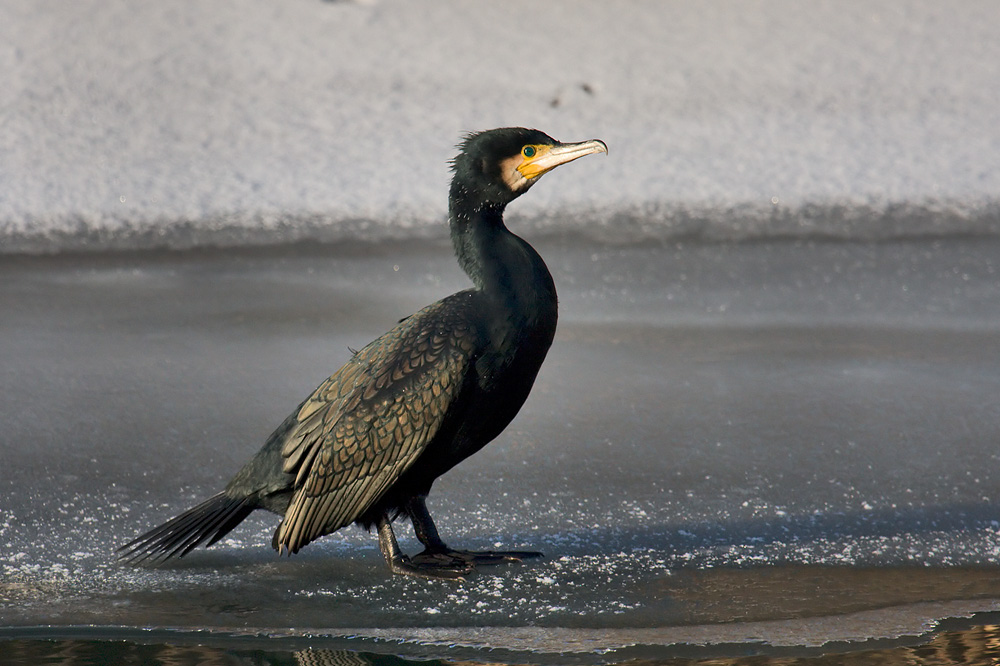Great cormorant: Red Data Book of Armenia

Cormorants — Phalacrocoracidae
Status. A rare and threatened species. Listed in the IUCN Red List of Threatened Species (ver. 3.1) as Least Concern. According to IUCN criteria categorized as Vulnerable VU B1ab(iii).
Distribution. Distributed in Europe, Russia, South and Central Asia, South Caucasus, Africa, India, China, Southeast Asia, Australia.
Distribution in Armenia. It was a widespread species on Armenia’s water bodies. In the Lake Sevan it was a non–migratory species. At present, it is a rare bird on the Great Sevan and Lesser Sevan during migrations and in summer. In winter it occurs not every year on the Lake Sevan, Akhurian Reservoir and the Ararat Valley’s non–freezing water bodies.
Habitats. Wetlands, rivers, fish ponds and lush riparian vegetation. Resting is preferred on lake shores. The only known nesting site was destroyed through the subsidence of the Lake Sevan and the drainage of the Lake Gilli.
Biological traits. Nestles in colonies, often with other waterfowl. The nest is cone–shaped, made of reed and located in riparian vegetation. Eggs are light blue or green, 4–5/clutch, size 51–63.5 mm. The breeding season is June–July. The brooding period is 28–30 days. Hatchlings develop fast and can fly by the age of 2.5 months.
Population size and its trends. The groups of 5–10 or 20–30 individuals can be observed during migrations. In winter singular individuals can be watched on the Lake Sevan and the flocks of 20–40 birds stay on non–freezing water bodies of the Akhurian and the Ararat Valley.
Major threats. Destruction of nesting grounds through the subsidence of the Lake Sevan and poaching.
Conservation measures. Protected in Sevan National Park and Lake Arpi National Park. Personnel of the Armash fish ponds are involved in outreach awareness–raising activities. It is essential to set compensations for fish losses to cormorant predation. It is also important to implement cormorant counts during the nesting season and migrations and to recover the Lake Gilli.
Suggestions
 The Ministry of Environment sent a letter international partners to draw their attention to the real danger of environmental disasters as a result of Azerbaijan's large-scale aggression towards the territory of Armenia
The Ministry of Environment sent a letter international partners to draw their attention to the real danger of environmental disasters as a result of Azerbaijan's large-scale aggression towards the territory of Armenia
 Vicia pisiformis: Red Data Book of Armenia
Vicia pisiformis: Red Data Book of Armenia
 Vavilovia formosa: Red Data Book of Armenia
Vavilovia formosa: Red Data Book of Armenia
 Trigonella capitata: Red Data Book of Armenia
Trigonella capitata: Red Data Book of Armenia
 Trigonella astroides: Red Data Book of Armenia
Trigonella astroides: Red Data Book of Armenia












